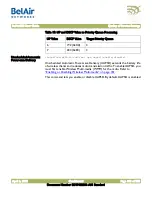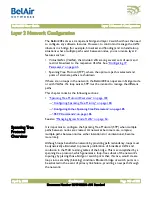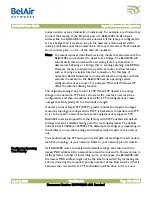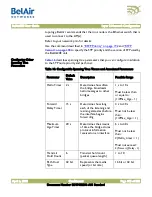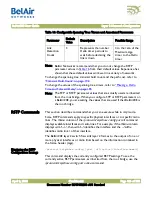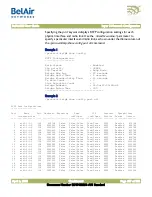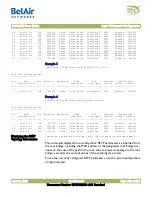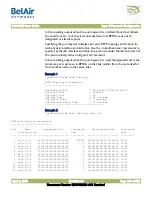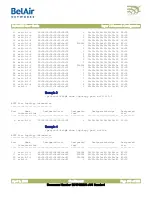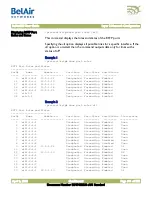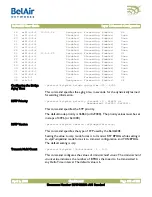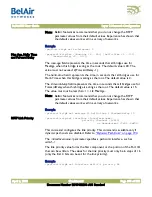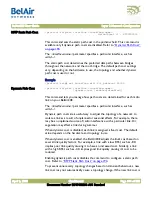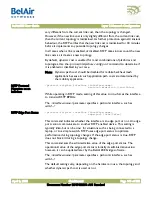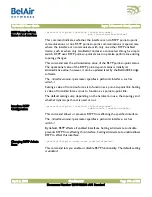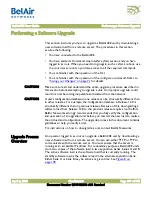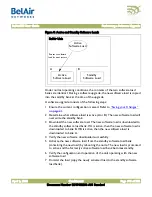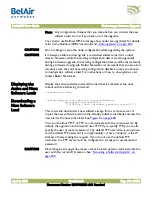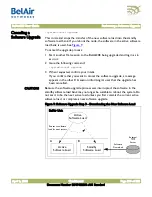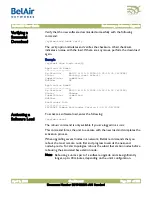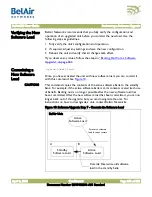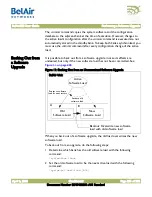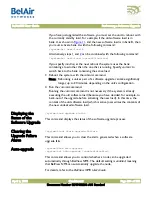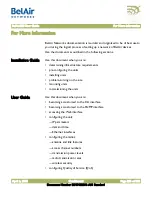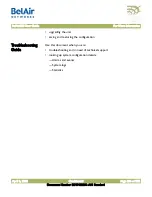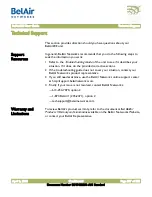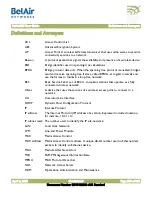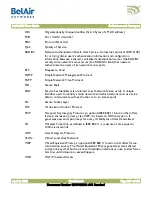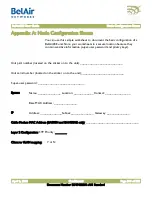
BelAir20E User Guide
Layer 2 Network Configuration
April 2, 2012
Confidential
Document Number BDTM02201-A01 Standard
very different from the current link cost, then the topology is changed.
However, if the new link cost is only slightly different from the current link cost,
then the current topology is maintained. As further protection against transient
behaviour, the RSTP verifies that the new link cost is maintained for 30 minutes
before it implements any potential topology changes.
In all cases when a link is enabled or disabled, RSTP takes into account the new
link costs as it creates a new topology.
By default, dynamic cost is enabled for most combinations of platforms and
topologies. Use the
/protocol/rstp/show config port
command to determine if
it is enabled or disabled in your case.
Note: Dynamic path cost should be disabled for mobile backhaul mesh
applications because in such application path costs are determined by
the mobility application.
RSTP Protocol
Migration on an
Interface
/protocol/rstp/set interface <interface-name>
protocol-migration {true|false}
While operating in RSTP mode, setting of this value to
true
forces the interface
to transmit RSTP BPDUs.
The
<interface-name>
parameter specifies a particular interface, such as
wifi-2-1
.
RSTP Edge Port Status
/protocol/rstp/set interface <interface-name>
edge-port {true|false}
This command indicates whether the interface is an edge port or not. An edge
port cannot communicate to another RSTP enabled device. This setting is
typically
false
, but can be
true
for situations such as being connected to a
laptop, or to a simple switch. RSTP uses edge port status to optimize
performance during topology changes. If the edge port status is true, RSTP
does not block it during a topology change.
This command sets the administrative value of the edge port status. The
operational value of the edge port status is initially its administrative value;
however, it can be updated later by the BelAir20E bridge software.
The
<interface-name>
parameter specifies a particular interface, such as
wifi-2-1
.
The default settings vary, depending on the hardware in use, the topology and
whether dynamic path cost is used or not.


